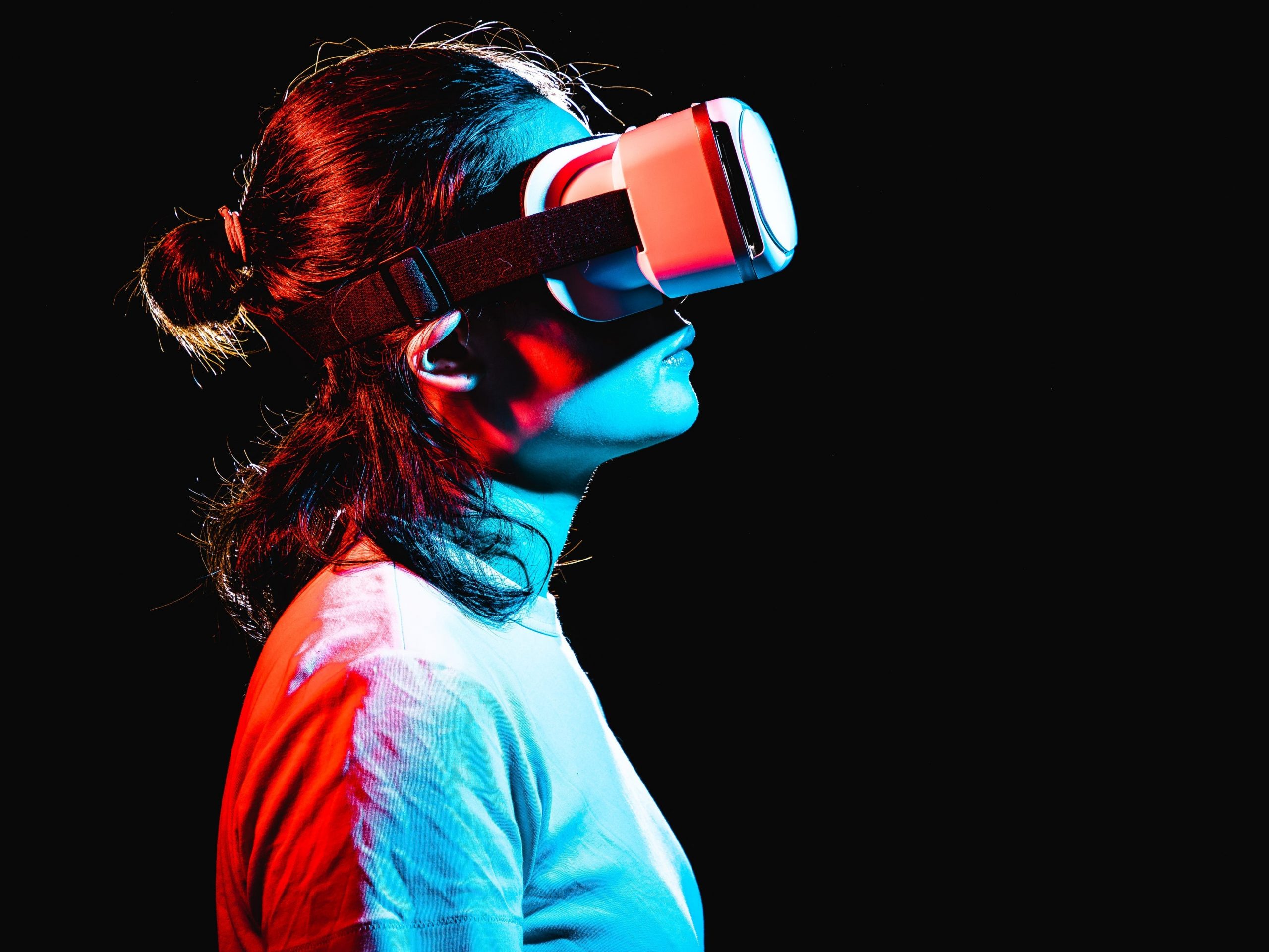- Microsoft launched its plans for virtual reality Tuesday at the Ignite Developer Conference.
- Microsoft Mesh will eventually allow for VR experiences and users to connect across devices and platforms.
- Columnist Jason Aten says it’s in a unique position to drive usage from developers and customers.
There’s a scene in the 2014 movie “Kingsman: The Secret Service” where one of the characters walks into a conference room and sits at a table with another character for a meeting. Both pick up a pair of glasses, and as they put them on, we see a half dozen or so other participants appearing around the table as life-like holograms.
It’s obviously a spy movie, with all of the high-tech, science fiction gadgets that come with the genre, so we’re fine with the fact that it’s not real.
If it was up to Microsoft, however, it might become reality a lot sooner than we think. Well, a virtual reality, at least.
On Tuesday, at the company’s annual Ignite Developer Conference, Microsoft gave the world a look at its plans for the future of virtual reality by way of what the company calls Microsoft Mesh – a set of tools for collaborating within mixed and augmented reality experiences that it’s building on top of Azure, the company’s cloud computing platform. The company said it has plans to roll out Mesh-powered features on Microsoft Teams, its Slack equivalent, in the not-so-distant future.
It’s ambitious, to say the least.
In addition to building VR capabilities of its own, it wants to be the platform that allows users to connect across devices and platforms.
Microsoft has HoloLens and Facebook has Oculus, but people using those different devices don't really have a way to interact with each other. As other manufacturers - like Apple or Samsung, for example - work on bringing additional products to the market, the technology will only become more siloed.
Imagine if you logged onto a video conference on a Dell laptop and could only communicate with people who were also using Dell. Or imagine you could only send text messages to people who were also using a device running iOS. No one would buy those products because we accept it as a given that all laptops that connect to the internet can communicate and all smartphones can send and receive messages with each other.
Microsoft's goal is to bring the same time of cross-platform collaboration that you can currently have with those devices to VR and AR hardware and software.
Microsoft's in a unique position to drive adoption from both users and developers.
It isn't hard to imagine a future version of Microsoft Teams that includes the ability to launch VR meetings with your team or invite customers to a virtual space to give a sales presentation.
Microsoft has a built-in audience of both business and consumer customers that it can leverage as it builds out its own capabilities.
Over the past year, Microsoft says it passed over 115 million users for Teams, and even before the pandemic, the company reported it had more than 200 million corporate users of its Office 365 productivity suite.
If anything, Microsoft has proven it has remarkable stickiness when it comes to converting its existing customers into users of new software.
More importantly, however, is that Mesh will allow developers to take a VR app or service they've already built and make it possible to use it to collaborate. A big part of this effort is that Microsoft is building the APIs and frameworks necessary for that to work. There's a difference between developing for a small, niche product market that very few people are using and developing something that ties into a platform built by Microsoft.
Mesh is an acknowledgment that virtual meetings aren't going anywhere - they could just be better.
Even as people return to the office, some version of remote work is most definitely here to stay, with major companies like Spotify leaning into the "work from anywhere" mentality.
If anything, the last year has proven that there are a lot of jobs that we thought were best done sitting in a corporate office but make just as much sense to do from wherever.
There are also very real advantages to continuing to incorporate remote work, not the least of which is the ability to attract top talent without having to relocate them.
Of course, there are barriers to collaborating when you can't be together physically. While video meetings have replaced in-person meetings in a lot of situations, there are times when the format limits the amount of interaction you're able to have or things you can accomplish.
Sometimes it helps to be able to collaborate in ways that go beyond sharing documents. For example, if you're working on a team that builds complex parts or products, being able to meet and interact with a virtual model is a lot different than just talking about it over a phone call or video meeting.
Even giving a team presentation is different in a video meeting. One person talks while sharing a slide presentation on a screen, while everyone else becomes a small box on the side. If you have more than a handful of participants, you can't even see everyone.
One of the most striking things about the technology is that not only will it allow people in different locations to interact together with virtual spaces and objects but to also see holographic representations of the other participants as they do. That can make a big difference in terms of the overall experience - imagine being able to get your entire team together in a virtual space and interact as though you were all together in person.
To be fair, the technology is limited.
Right now, VR allows you to appear as a sort of cartoon avatar version of yourself. In the future, Microsoft says that people could scan their entire bodies, appearing as a realistic hologram in a variety of different applications, including everything from games to meetings to productivity tools.
You might think of it as Zoom 2.0. In some ways, that's an apt way of looking at it.
If Zoom - and software like it - was the thing that brought much of the world together as we all suddenly had to find ways to stay connected without being together, Microsoft thinks Mesh could be the way to expand and enrich those experiences beyond staring at boxes on a laptop screen.
It just might work.

